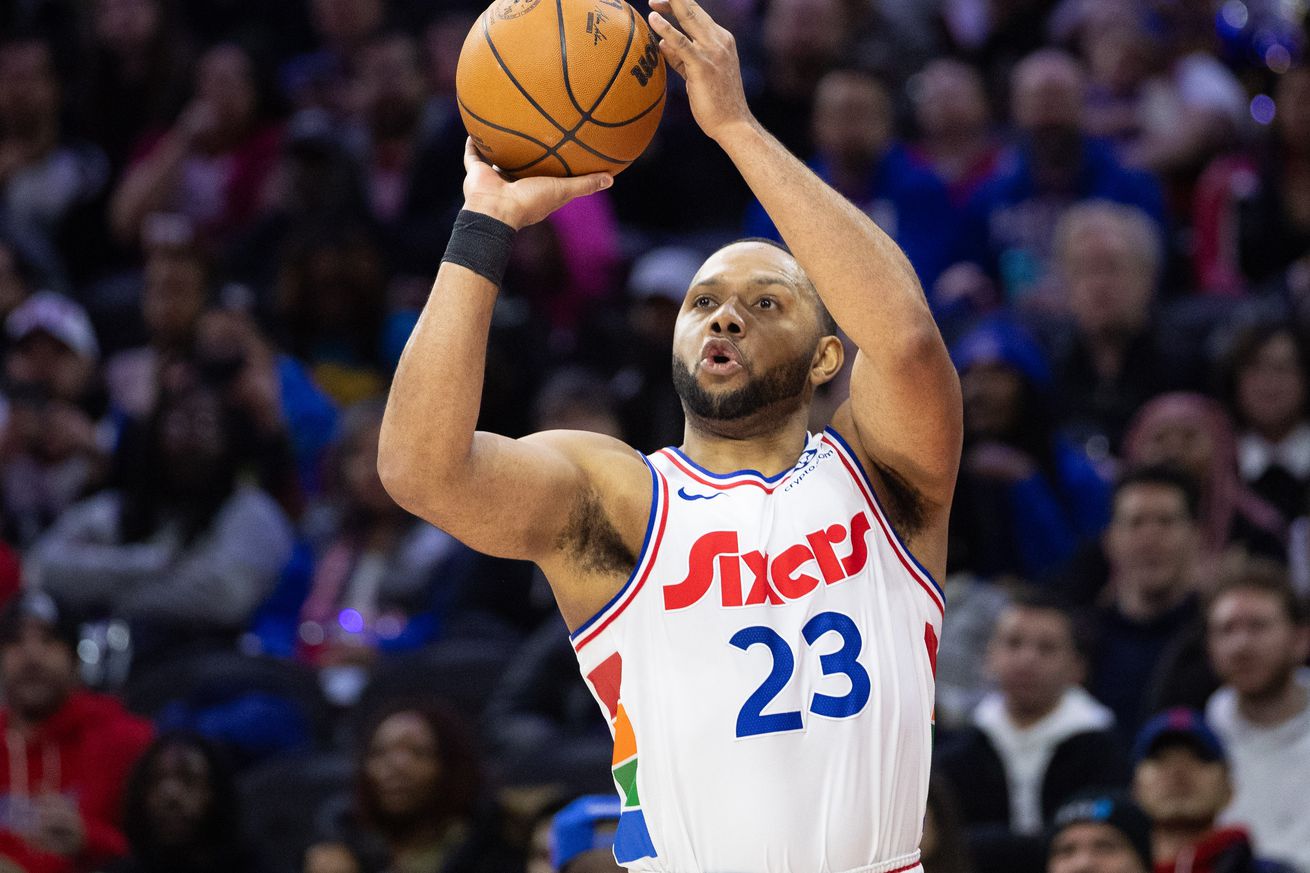
Both Gordon and the Sixers stand to benefit if he declines his player option, even if they immediately re-sign him this offseason.
On Friday, longtime NBA insider Marc Stein reported that Russell Westbrook plans to decline his $3.5 million player option to become an unrestricted free agent this offseason. The move wasn’t entirely unexpected, as Sam Amick and Tony Jones of The Athletic reported in mid-April that Westbrook’s “future with the organization” was “uncertain” after the Nuggets fired head coach Mike Malone less than a month before the playoffs began.
The Sixers can only hope that Eric Gordon follows in Westbrook’s footsteps.
When a free agent signs a one-year, minimum-salary contract with a team, the NBA covers a portion of it to help entice teams to sign older veterans. No matter how many years they’ve been in the league, their cap hit is equivalent to the minimum salary for a player with only two years of NBA experience. However, they receive their full salary based on how many years of experience they actually have.
But when a player signs a two-year, minimum-salary deal, their cap hit is equivalent to the minimum salary for someone with as many years of experience as they have. That includes two-year contracts with second-year player options, which explains why Gordon had a $3.3 million cap hit this past season rather than a $2.1 million one.
If Gordon picks up his player option, he’ll count as nearly $3.5 million against the Sixers’ cap sheet in 2025-26. If he declines it and re-signs on a one-year, minimum-salary deal, he’ll count as only $2.3 million. That might not sound like a major difference, but every dollar matters when you’re trying to navigate the aprons.
So, what’s in it for Gordon? Why would he even consider opting out unless the Sixers promised to re-sign him? Well, if he picks up his player option, he’ll only receive a 5 percent raise over what he earned last year, or $3,468,960. If he declines his option and then signs another minimum contract, he’ll earn $3,634,153 next season, which is roughly $165,000 more than the value of his player option.
Again, that might not sound like much of a difference. But if the Sixers promise to re-sign him—they’ll be allowed to legally negotiate with him one day after the Finals end—he can make an extra $165,000 just by exploiting a technicality. There’s no real reason for him not to do it unless he believes the Sixers would go back on their pledge to re-sign him. (Besides, if he picks up the option, he’ll immediately become trade-eligible.)
Granted, re-signing the 36-year-old Gordon doesn’t align with team president Daryl Morey’s pledge to make the roster younger and more athletic this offseason. Gordon also got off to a miserable start last season before he underwent oral surgery in late December to get his wisdom teeth removed. But over a 13-game stretch following his return, he averaged 11.5 points per game while shooting 52.8 percent overall and 55.2 percent from deep.
If Gordon found a richer offer elsewhere in free agency, there’d be nothing stopping him from signing with another team. But if the Sixers are the only team that’s willing to sign him, he’d still manage to make more money by opting out and re-signing than he would by just picking up his player option. The $1.2 million in cap savings should more than justify it from the Sixers’ perspective, too.
This would be a rare example of a win-win transaction between a player and his incumbent team. The Sixers can only hope that Gordon sees it that way, too.
Unless otherwise noted, all stats via NBA.com, PBPStats, Cleaning the Glass or Basketball Reference. All salary information via Salary Swish and salary-cap information via RealGM.
Follow Bryan on Bluesky.